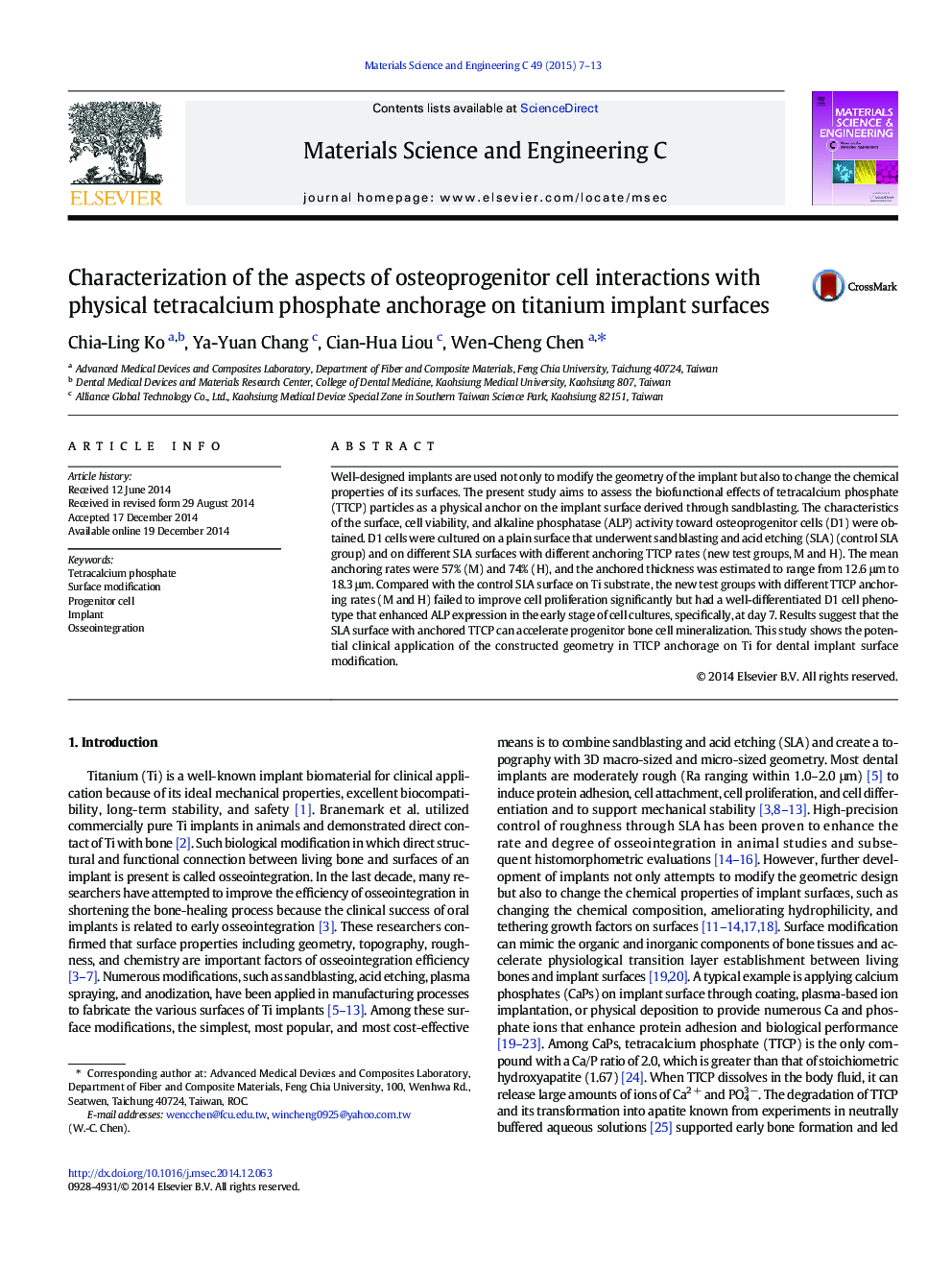| Article ID | Journal | Published Year | Pages | File Type |
|---|---|---|---|---|
| 1428153 | Materials Science and Engineering: C | 2015 | 7 Pages |
•TTCP (tetracalcium phosphate) as a physical anchorage on implant is characterized.•Theoretical values of anchored thickness and capping areas were estimated.•TTCP anchored by sandblasting can accelerate progenitor bone cell mineralization.•TTCP anchored on SLA (sandblasting and acid etching) surface is a promising method.
Well-designed implants are used not only to modify the geometry of the implant but also to change the chemical properties of its surfaces. The present study aims to assess the biofunctional effects of tetracalcium phosphate (TTCP) particles as a physical anchor on the implant surface derived through sandblasting. The characteristics of the surface, cell viability, and alkaline phosphatase (ALP) activity toward osteoprogenitor cells (D1) were obtained. D1 cells were cultured on a plain surface that underwent sandblasting and acid etching (SLA) (control SLA group) and on different SLA surfaces with different anchoring TTCP rates (new test groups, M and H). The mean anchoring rates were 57% (M) and 74% (H), and the anchored thickness was estimated to range from 12.6 μm to 18.3 μm. Compared with the control SLA surface on Ti substrate, the new test groups with different TTCP anchoring rates (M and H) failed to improve cell proliferation significantly but had a well-differentiated D1 cell phenotype that enhanced ALP expression in the early stage of cell cultures, specifically, at day 7. Results suggest that the SLA surface with anchored TTCP can accelerate progenitor bone cell mineralization. This study shows the potential clinical application of the constructed geometry in TTCP anchorage on Ti for dental implant surface modification.
Graphical abstractFigure optionsDownload full-size imageDownload as PowerPoint slide
